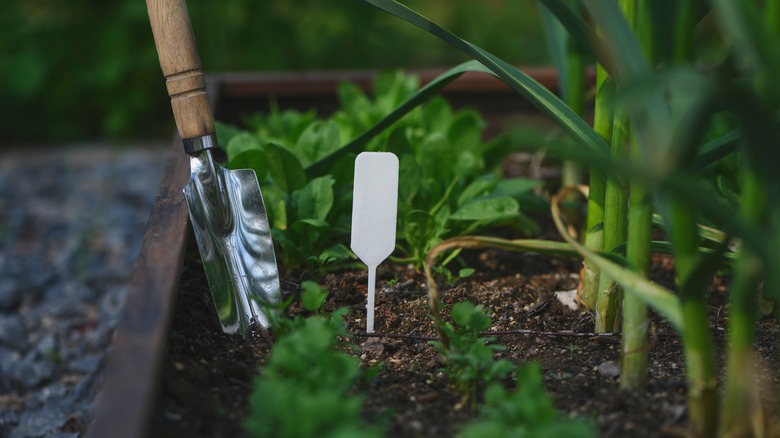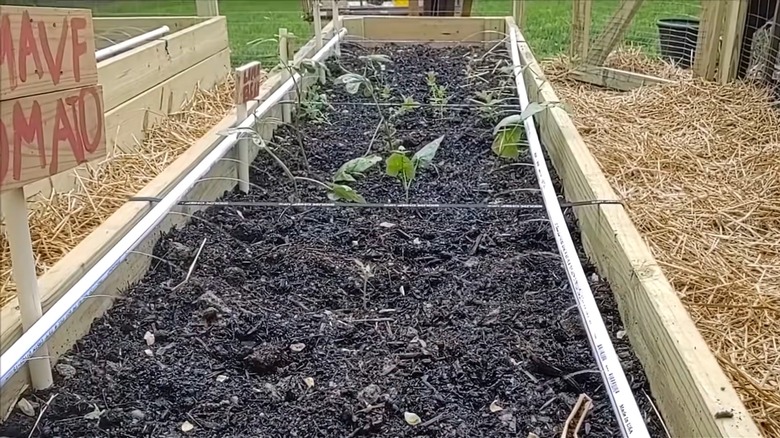Keep Your Plants Hydrated With This Genius DIY Raised Garden Bed Idea
Some days, it feels like your whole life is centered around caring for your plants, especially when it comes to watering. Sure, gardening is good for your health, but it can also be a bit overwhelming sometimes. There are all sorts of tricks available to take the load off of a gardener. Unfortunately, not all of them are good, and if you use the wrong technique, you could undo all of your hard work. Thankfully, with a few simple tools and a bit of time, you can set up a DIY system in your raised garden beds to keep them hydrated. The setup, though it might sound daunting, is simple, even if you've never worked on something like it before.
YouTuber Micah Mobley explains the process of setting up his system. With a few 3/4-inch and 1/2-inch PVC pipes, a valve, a garden hose, and a few tools, you can have a full irrigation system set up. One major benefit of this design, besides the time it saves you in a day, is that it helps you avoid many of the major mistakes you can make when watering your plants. Spraying them with a traditional hose or sprinkler can cause issues because regularly wetting leaves can lead to mold, mildew, and burning. This irrigation system is low enough the pipes aren't in the dirt, allowing it to freely release water, but are below the leaves to prevent them from getting wet. Despite this design being easy to set up, it works well with any plant you want to grow in a raised bed.
How to set up your irrigation system
To set up this system, you're going to start with the 3/4-inch pipes. Use these to create a path from your water source to your garden. You can build T-junctions with the PVC to connect several beds together as well. Once you start getting into your garden, you'll switch to the 1/2-inch pipe with a cap on one end that runs the length of your bed.
For skinnier designs, one to two are fine, but you may need a few more for larger beds. Using a 1/16th drill bit, place holes about every 6 inches on your long pipe. After connecting everything and testing it out, you should have a watering system. You may also need to check local laws, as sometimes backflow valves are required. Even if they're not, it may be helpful to have a backflow preventer valve and a filter to protect your water source and prevent the pipes from getting blocked up by large particles.
With this system, your entire bed gets the same amount of water. When you plan out your beds, you want to choose plants with similar moisture needs to grow together. In the video, the creator uses valves to control the flow. This is a great and simple idea, but another solution would be to add a smart water timer. They allow you to control how much water each bed gets and for how long. You can even set the time it goes off to avoid some of the worst times to water your lawn and garden. It's perfect to ensure different beds meet their various requirements, allowing you to grow even drought-tolerant plants.

